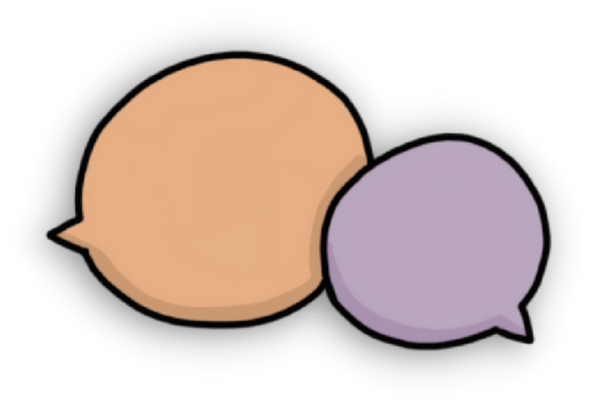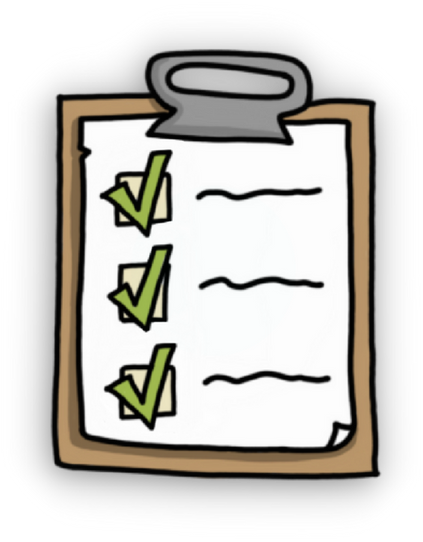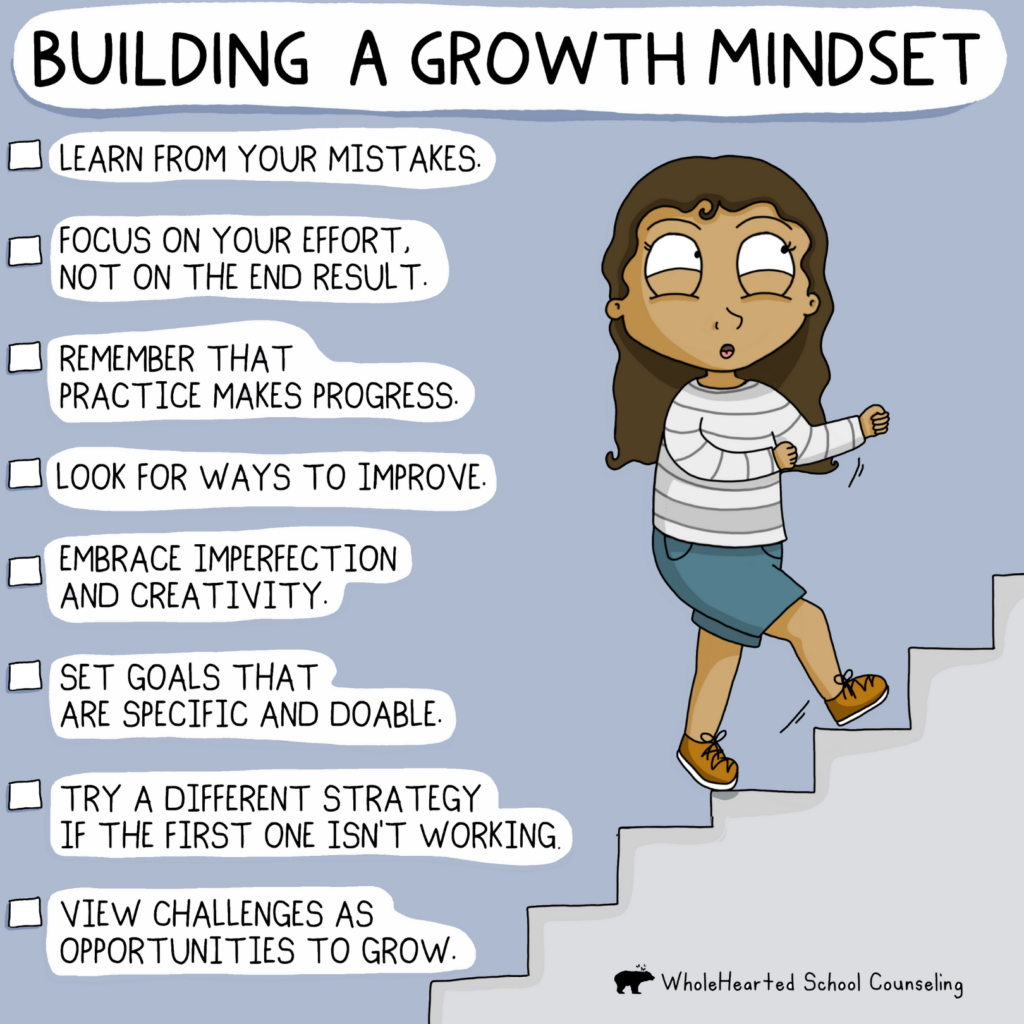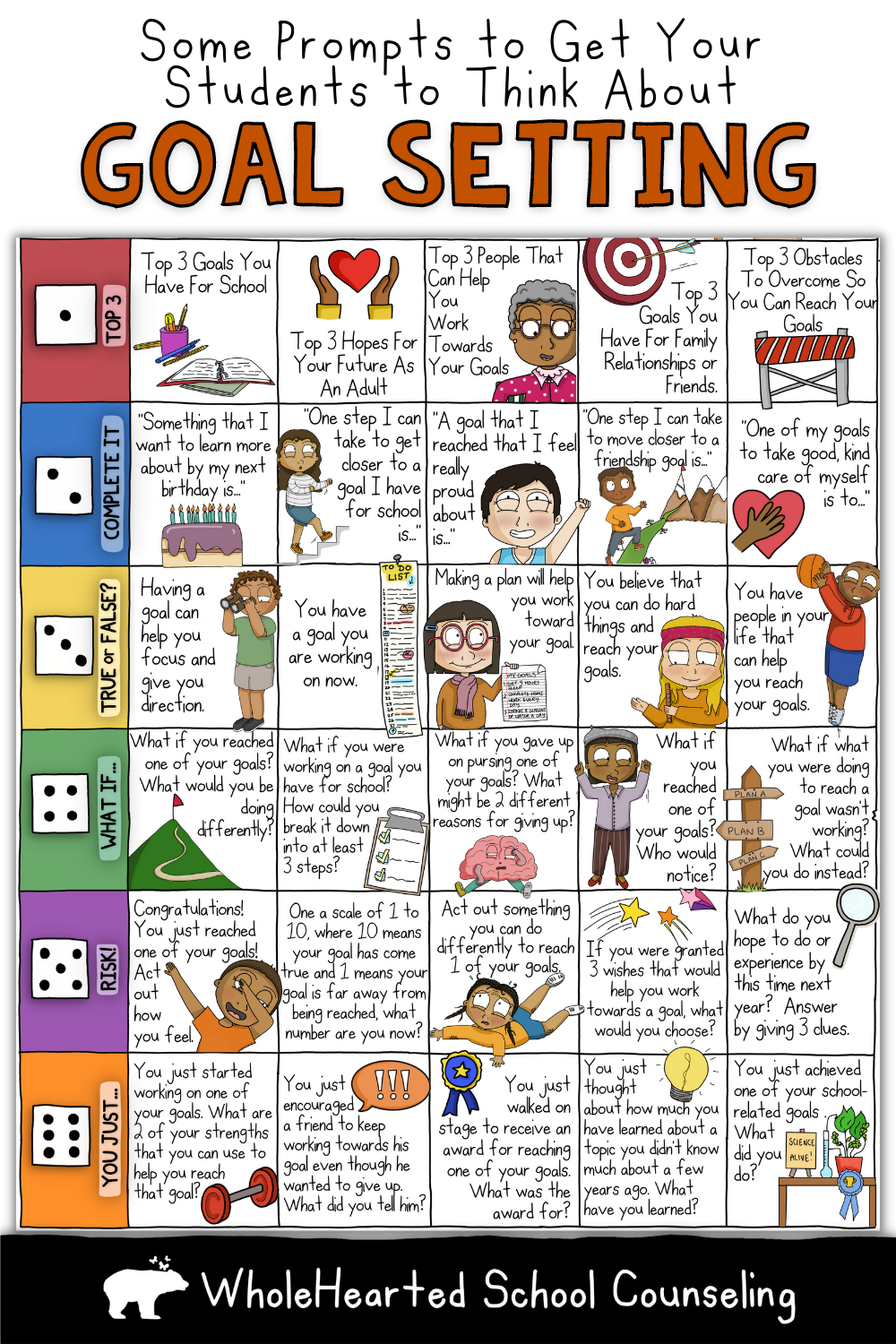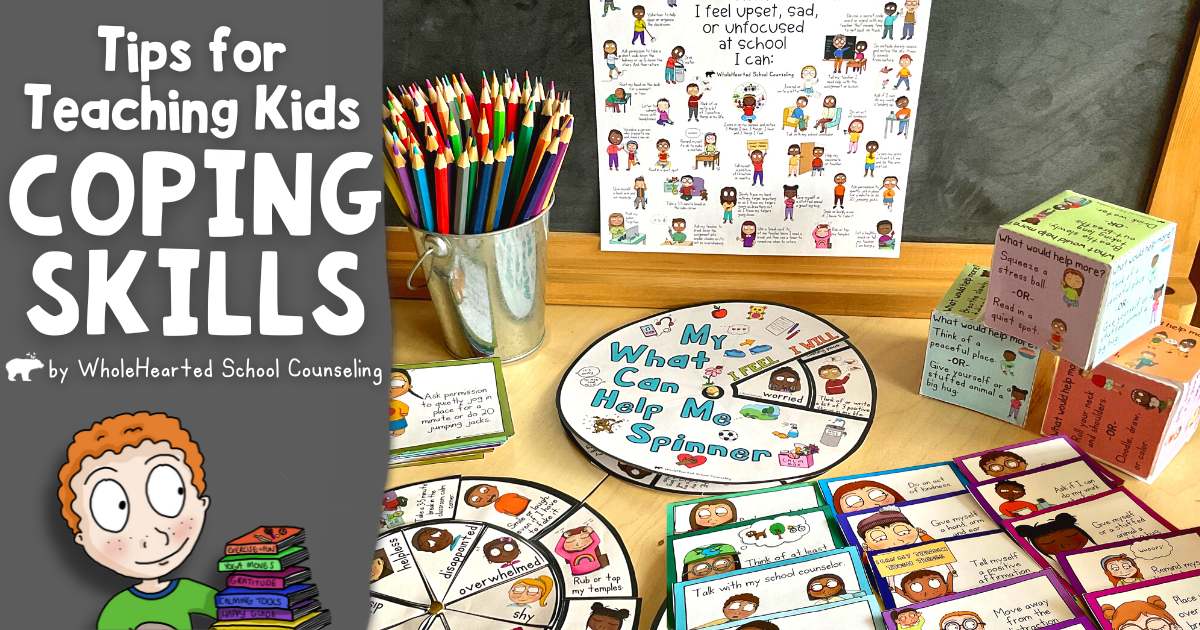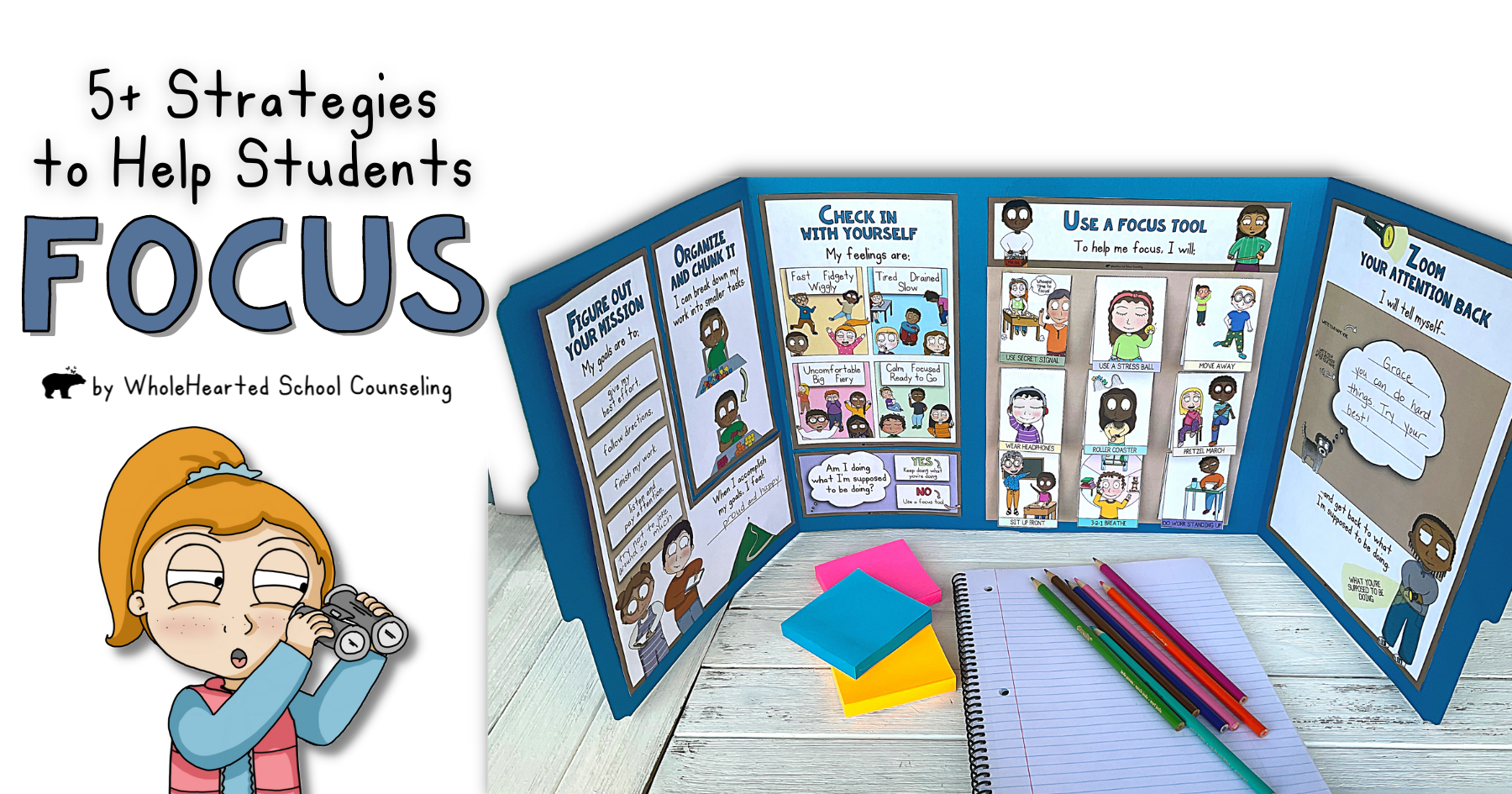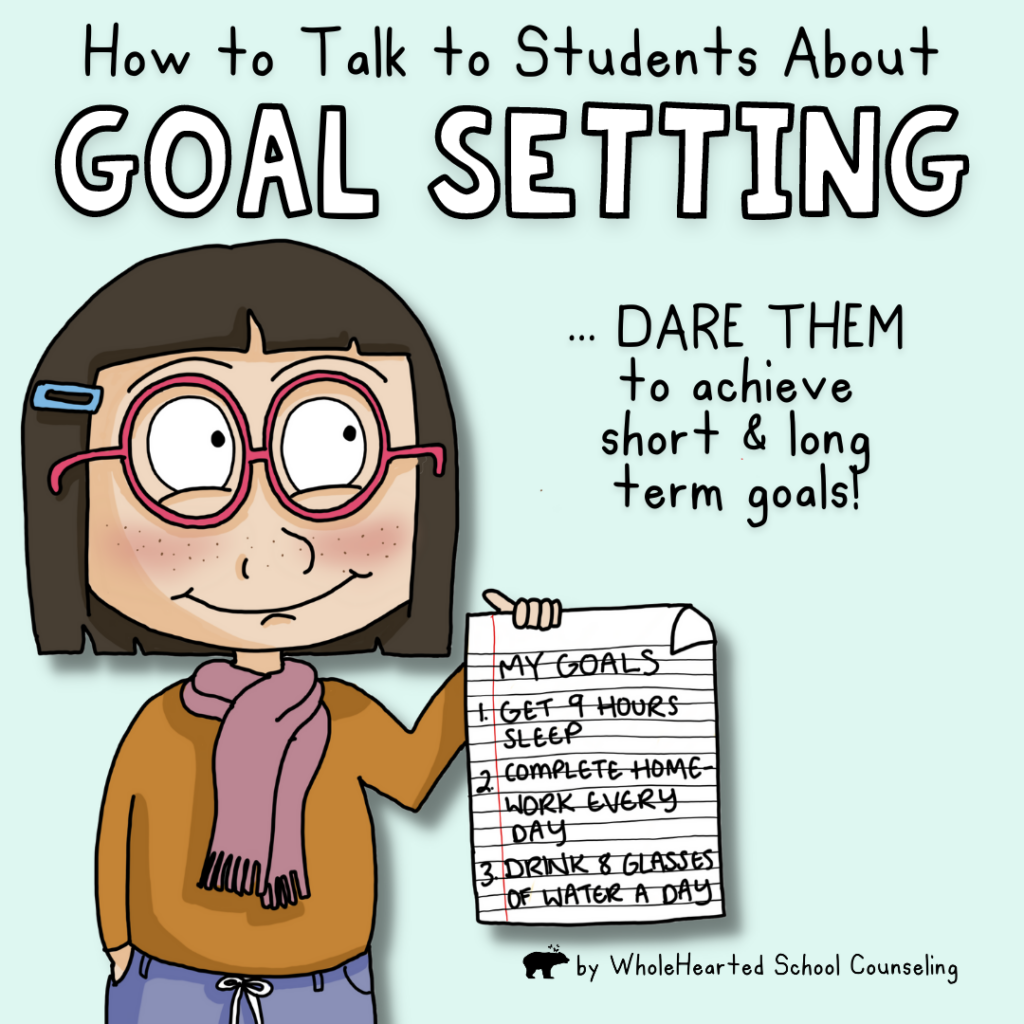
Making Goal Setting Something More Concrete for Kids
One of the most important lessons I used to teach students when I worked as a school counselor was on goal-setting. Goal-setting is super valuable to not just kids, but to us adults too, because it helps you to stay focused, inspired, and motivated. When you set a goal, it helps to provide you direction of where you want to go and what you want to achieve. And when those goals are broken down into smaller, more manageable steps, it’s easier to stay on track and feel like the effort you are putting towards your goal is worth it (even if it’s hard).
Setting goals helps students reach academic and personal success. For instance, a student who wants to make friends can set a goal to join an after school club where they can meet new people that share similar interests. A student who wants to improve their physical health can set a goal to exercise everyday, drink more water, or eat healthy food.
Teaching someone to set goals can be a pretty complicated process. Especially if you are teaching kids. At first, it seems as easy as asking, “What do you want to accomplish?” and then moving towards that goal. But there’s a big difference between dreaming and achieving.
Following are some points I liked to make when I taught goal setting to some of the older students at the elementary school I used to work at. To make it a bit easier to read, I placed some of the ideas I shared with students in italics.
Dream Big!
It’s great to have dreams. . .to think about what you would like to do, where your life will go, and places you want to travel. But there are definite steps one must take to not simply be just a dreamer and move towards being an achiever. It’s like wishing to win the lottery but never buying a ticket. We want to encourage our students always to buy tickets to their dream lottery.
From Dreamer to Achiever
A dreamer becomes an achiever when you create a plan for their goals. And plans are made by setting long-term and short-term goals. Wanting to become an astronaut is a great long-term goal but that can feel like a long time away.
Supportive Versus Independent Goals
Short-term goals help bridge the gap between what you are doing now and what you want to do later. You can’t work at NASA as a nine-year-old. But you can set goals of making good grades, trying harder in math and science, and reading more books on space.These are supportive goals: short-term goals that support your long-term goal.
On the other hand, independent goals are goals you set for yourself that may not connect with your long-term goal. An independent goal may be to eat more fruits and vegetables, score well on a test in school, or even make the cross country team. They aren’t related to becoming an astronaut directly, but indirectly they are in the sense that working on these goals helps you to build perseverance, responsibility and a growth mindset.
(These are all skills that are transferrable to short and long-term goals….As the famous author Henry David Thoreau once said, “What you get by achieving your goals is not as important as what you become by achieving your goals.”)
Our short-term goals, supportive and independent, help change us and grow us into individuals who can achieve our long-term goals. These goals teach us grit, resilience, determination, and self-confidence. These skills and traits will last long after the medal is on our neck or we’ve made our first trip to the moon.
Deciding What You Want
But determining these goals and setting them can be an overwhelming task. Especially when you think Christmas is so far away and time moves so slowly.
While a few dreams and goals may quickly and easily come to the mind of students, there may need encouragement to think bigger and broader about what students want to accomplish. This is also an excellent opportunity to engage students in meaningful conversations and strengthen relationships.
When you close your eyes and think about yourself in five, ten, or even fifteen years, what does your life look like? Who are you with? What are you doing? Where are you?
Ask more probing questions to dive deeper.
- Are you living in a city?
- Out on a farm?
- Do you have the same friends you do now?
- Do you want to be making things?
- Do you want to own your own business?
Think about different areas in your life: health and fitness, family, social life, schooling, hobbies, traveling, and finances. If a genie granted you one wish in each arena, what would you wish for? Maybe you would want never to crave junk food. Perhaps it’s that you wish to learn how to throw pottery. Possibly you would wish to never worry about money. Maybe you’d want to have a home that you’d never have to move from.
DARE Your Students
Now this is one of my favorite parts: Dare your students to think of things they feel scared or intimidated by.
What is something you’d love to do but don’t think you can? Is it trying out for a team? Do you want to cure an illness? What is something you should be doing but don’t want to do? Do you need to spend more time studying multiplication tables or completing chores? Spend more time with friends or read more books? What brings you joy? Dare yourself to do this!
Why not think about goals as personal dares? Because really, who doesn’t love a good dare? Daring yourself to do something makes it less overwhelming or intimidating, and instead makes it more fun.
Dare students to dare themselves! For example, “I dare myself to invite a new friend over.” or “I dare myself to practice multiplying for 10 minutes after school.”
A dare is like an adventure. An experiment. Something that you don’t have to take so seriously, so it makes it somewhat easier to try and go after.
I dare myself to run two days a week. I dare myself to invite a new friend over. These “dares” encourage us to be brave and resilient but also provide an incredible opportunity to feel proud and accomplished, pushing us closer to achieving our long-term goals.
Fun Activities to Teach Goal Setting
1. Vision Board:
Have students create a vision board that includes pictures and words that represent their goals. They can use their own words, drawings, and/or cutouts from magazines, newspapers, or online images to create a collage or scrapbook-like page of what they want for their future. Once they have created their vision board, invite them share it with the class and discuss their goals. Ask your students which goals they want to dare to themselves to go after first. Or maybe someone feels shy about creating a vision board and/or talking about it. Dare him or her to to just try!
2. SMART Goals:
Teach students the SMART goal-setting strategy. SMART stands for:
Specific, Measurable, Achievable, Relevant, and Time-bound. Have students practice setting SMART goals for different areas of their life. Provide them with a fun fillable worksheet! Provide examples of what each of the words mean to better help them articulate their SMART goal.
3. Bucket List:
Tell students to draw a big bucket (or give them a worksheet with a bucket already on it). Then have them write and/or draw a bucket list of things they want to do, see, or accomplish in their future, inside the bucket. Suggest that they include both short and long-term goals. Dare them to dream big!
4. Personal Mission Statement
Have students write a personal mission statement. This would include writing or drawing about their values, goals, and dreams. Dare them to dig deep and really think about what is most important to them.Then have a discussion about how how their unique mission statements can help guide their decision making and actions, so that they can begin to turn their dreams into achievements.
5. Play Goal-Setting Games Games
Make goal setting fun and interactive by playing a game filled with prompts and questions that inspire your students to articulate their dreams, goals and dares. Play a regular store bought game, and each time a person has a turn, they have to share one of their goals and/or one step to get closer to that goal.
Or if you prefer a game with more specific questions and prompts, you and your students might love the one I created below (which is 1 of 32 SEL and counseling topics)
The Power of Goal Setting for Students
It’s a good thing to be a dreamer. Never stop dreaming about life and the world you want for yourselves. But only being a dreamer can lead to disappointment, as those dreams remain simply as visions in your mind.
Which is why you also need to be a darer. You need to dare yourself to take action to get you step by step closer to your goals.
By teaching goal setting and creating a plan of long-term goals and short-term goals, students have the ability and skills to turn those dreams into personal achievements. Regardless of how their long-term goals change and develop over time, the skills and mindsets learned through supportive and independent goals will carry them through. Goal setting teaches our students to build and strengthen the skills that provide them with confidence in themselves to succeed and handle what comes their way with resilience and a growth mindset.


